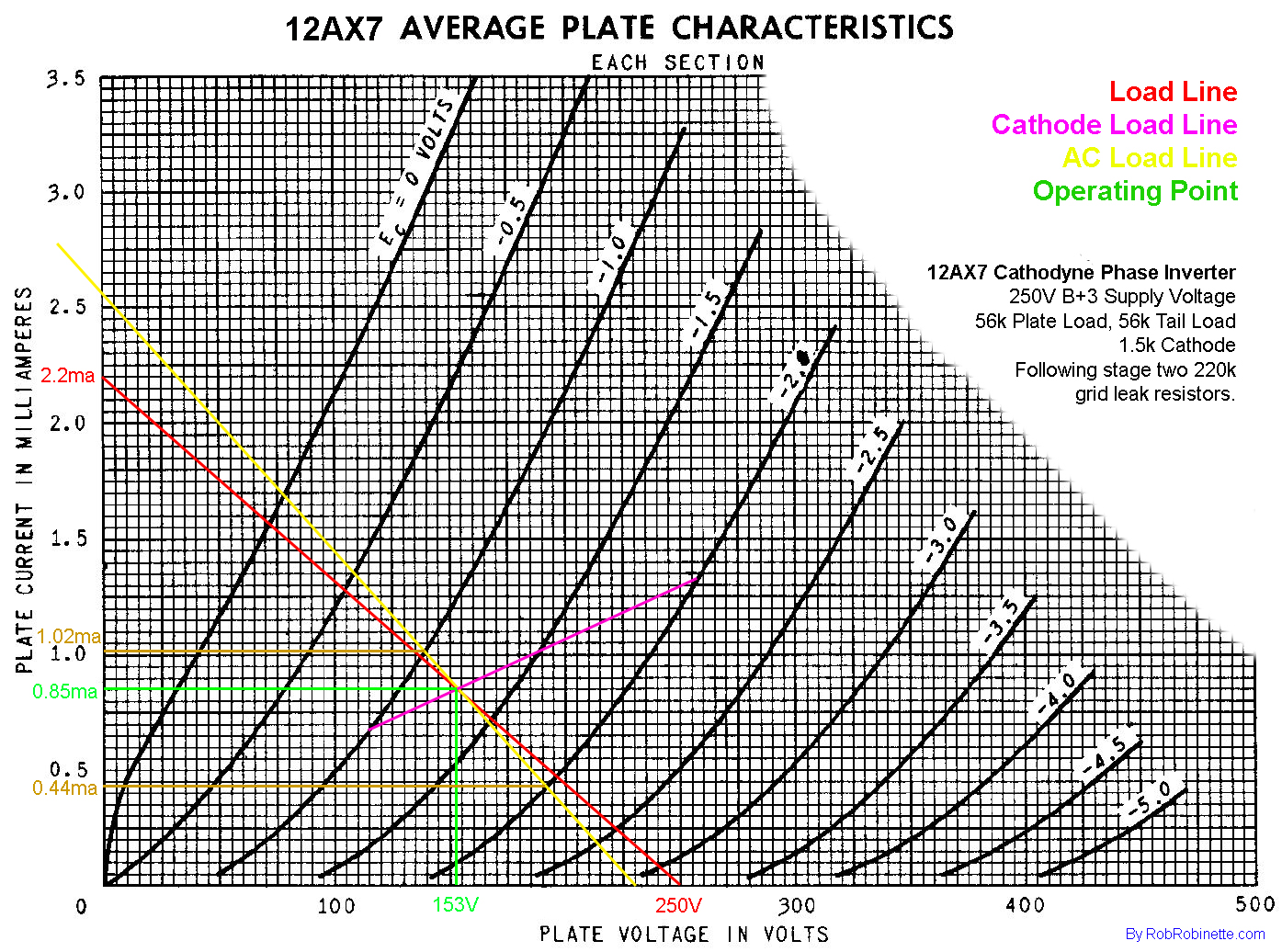I know cathodyne phase inverters always have a gain of slightly less than unity of around .96 but I can't figure out how that can be shown on a load line chart.
Here's the load line chart for a 5E3 cathodyne PI with 250V B+3 plate suppy, 56k tail and plate load resistors and 1.5k cathode resistor:

It shows a 1 grid volt swing of 179v - 123v = 56v which is shared between the cathode and plate for 28v each, which implies a voltage gain of 28. How would we show the true gain of .96 on this chart?
Here's the load line chart for a 5E3 cathodyne PI with 250V B+3 plate suppy, 56k tail and plate load resistors and 1.5k cathode resistor:

It shows a 1 grid volt swing of 179v - 123v = 56v which is shared between the cathode and plate for 28v each, which implies a voltage gain of 28. How would we show the true gain of .96 on this chart?
Comment